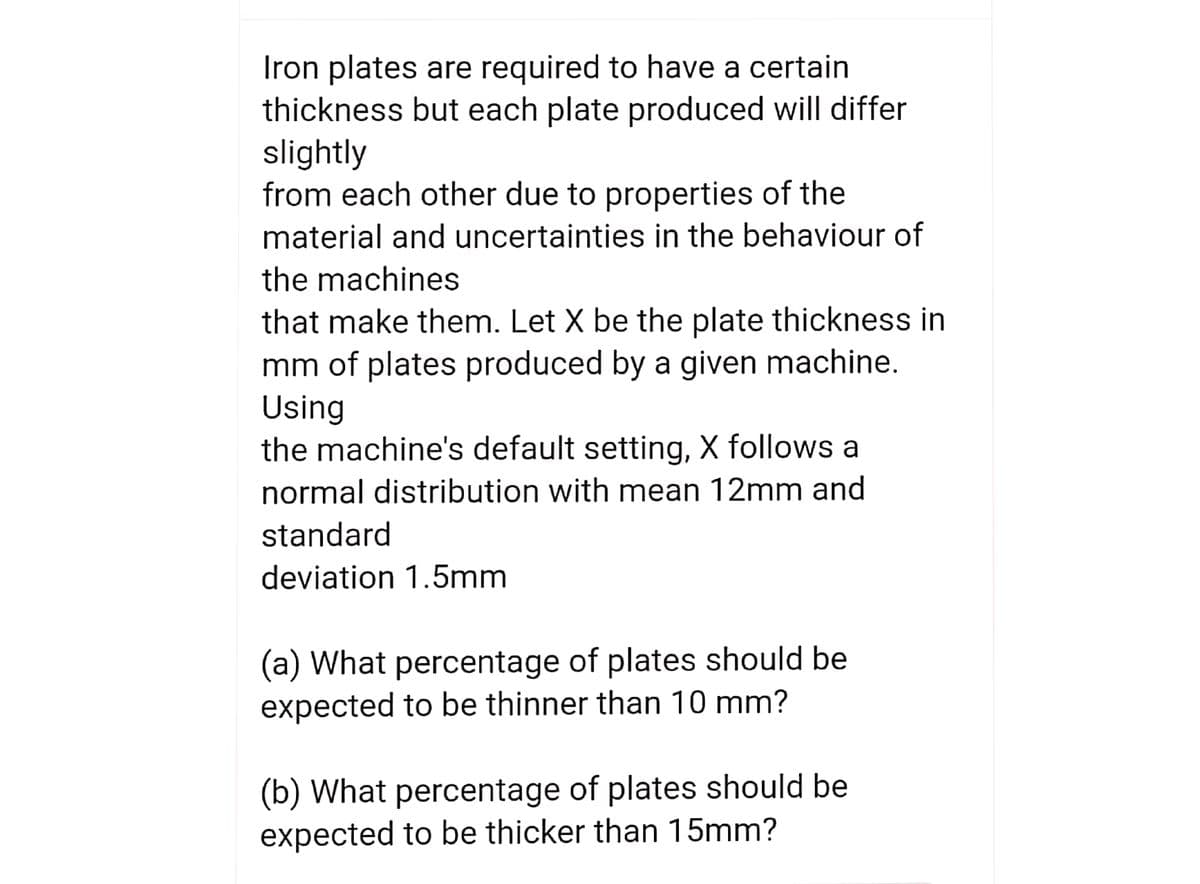(a) What percentage of plates should be expected to be thinner than 10 mm? (b) What percentage of plates should be expected to be thicker than 15mm?
(a) What percentage of plates should be expected to be thinner than 10 mm? (b) What percentage of plates should be expected to be thicker than 15mm?
A First Course in Probability (10th Edition)
10th Edition
ISBN:9780134753119
Author:Sheldon Ross
Publisher:Sheldon Ross
Chapter1: Combinatorial Analysis
Section: Chapter Questions
Problem 1.1P: a. How many different 7-place license plates are possible if the first 2 places are for letters and...
Related questions
Question

Transcribed Image Text:Iron plates are required to have a certain
thickness but each plate produced will differ
slightly
from each other due to properties of the
material and uncertainties in the behaviour of
the machines
that make them. Let X be the plate thickness in
mm of plates produced by a given machine.
Using
the machine's default setting, X follows a
normal distribution with mean 12mm and
standard
deviation 1.5mm
(a) What percentage of plates should be
expected to be thinner than 10 mm?
(b) What percentage of plates should be
expected to be thicker than 15mm?
Expert Solution
This question has been solved!
Explore an expertly crafted, step-by-step solution for a thorough understanding of key concepts.
Step by step
Solved in 3 steps with 2 images

Recommended textbooks for you

A First Course in Probability (10th Edition)
Probability
ISBN:
9780134753119
Author:
Sheldon Ross
Publisher:
PEARSON


A First Course in Probability (10th Edition)
Probability
ISBN:
9780134753119
Author:
Sheldon Ross
Publisher:
PEARSON
